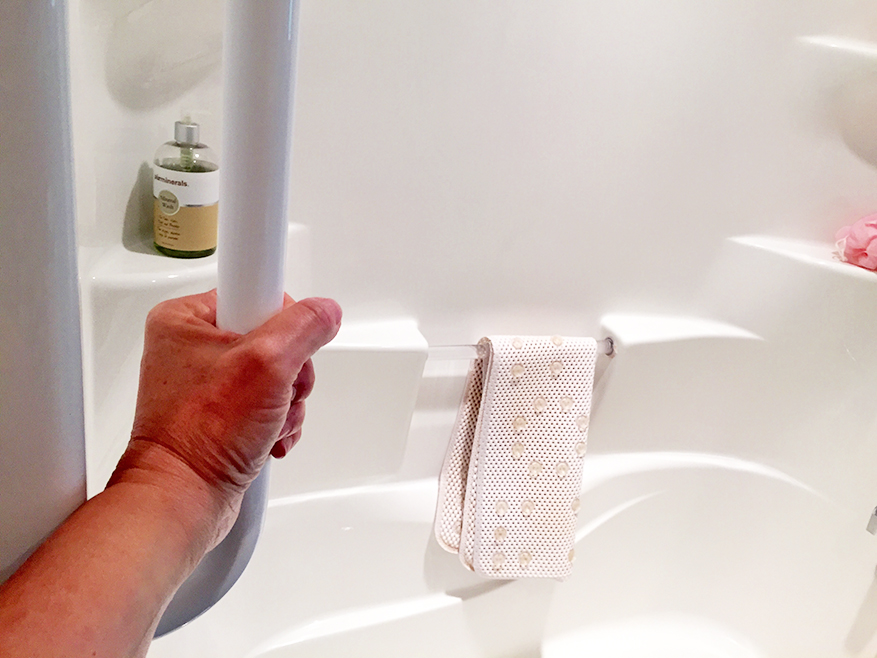The bathroom is one of the most common places falls occur among older adults; it can be wet and slippery not to mention difficult to maneuver with a walker or wheelchair. But there are a few simple changes seniors or caregivers can make to help ensure the bathroom is less risky for possible injury.
A 2008 study from the Centers for Disease Control and Prevention found that over 80 per cent of those injured in the bathroom were as the result of a slip and fall, most often from getting in and out of the tub. Injury rates were more common in women and older patients and a total 234,000 people in the United States were treated in emergency rooms during the course of one year.
Safety in the Bathroom
Begin by removing all tripping hazards from the floor area, especially throw rugs. A non-slip bath mat can be used after showers and then hung up to dry when done. Good lighting is important in any room or hallway where seniors travel. Vision issues can make it difficult to judge distance; using colour contrast to define the tread of a step, a toilet seat, a light switch or the edge of a bathtub can be helpful. For instance, if the floor is a light color, choose a dark toilet seat to increase contrast and help avoid falls. Raised toilet seats can also help reduce the risks of falls in the bathroom.
Grab bars can be installed beside the toilet, inside the tub or shower and at the entrance of the shower or tub. For those who are prone to balance problems, getting up and over a high tub wall can present a problem. Clamp-on grab bars can help in the tub but don’t rely on suction cup bars which are prone to letting go at the worst possible time.
Spend the money to have a medical supplier install grab bars properly to hold weight by using a stud finder or toggle bolts. A good grab bar should fit the user’s hand well and have a ridged grip to avoid slipping. If the senior is stepping up over a tub, place two grab bars where he or she can use both hands for balance while lifting up one leg. Use non-skid decals or anti-slip sprays to ensure the tub is not slippery and avoid any shower gels or oils that may leave a slick surface behind. Clean tub after each use with a cleanser that does not leave any residue.
Shower chairs and benches can also be useful for older adults who have difficulty standing for long periods of time in the shower. Battery-powered bath lifts can help raise and lower those with restricted mobility with the use of a hand control. A hand-hand shower head is also very helpful for those who sit while showering.
Ideally, old-style tubs can be replaced with a step-in tub which usually are fitted with a built-in bench; users can walk into the tub through a high-sided door. If larger renovations or a new build is in the budget, a curb-less shower with a built-in bench and wheelchair accessibility can be designed to be both functional and beautiful. Even younger seniors may want to think ahead when designing home renovations or building a new home.
Visit your local home medical supply distributor or check out the selection of assistive bathroom equipment online at a home goods or building supply store.






Add Your Voice
0 Comments
Join the Discussion